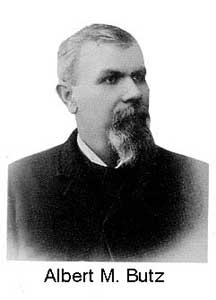A Brief History of Thermostats: The Inventors
Thermostats are the ubiquitous overlord of humanity’s day-to-day comfort. Think about it – there is hardly an American citizen who does not own and operate a thermostat in their own home. And yet, few people think about this little piece of technology past the annoyance of the Office Manager stubbornly locking the A/C at a crisp 64 degrees.
Thermostat Recycling Corporation is here to help you out. No, not with your Office Manager, sorry. We deal with thermostats every single day, so we are here to discuss the history of our favorite little piece of technology.
The Inventors
Once upon a time, people had a much harder time regulating their home temperature. In the early 20th century the majority of homes had manually operated furnaces. These furnaces, usually located in the basement, required frequent coal-stoking and physical adjustments of valves, draft, or dampers.
As someone who dreads even placing bare feet on cold wooden floors, basement coal-stoking every brisk winter morning sounds like a first world nightmare.
It is safe to say the market was ripe for a simpler means of regulating temperature, and in this spirit several men invented different types of thermostats in a short amount of time. Let’s meet them, shall we?

Andrew Ure (1778-1857)
Andrew Ure was a Scottish chemist who patented the bi-metallic thermostat in 1830. Ure had worked with textile mills throughout his career and identified the product’s need for a consistent temperature. Ure’s bi-metallic thermostat would bend as a result of increased room temperature, cutting off the energy supply. While this was one of the first recorded thermostat inventions, it saw little use. It took more than forty years for inventors in American to re-imagine and popularize the thermostat. We still give Ure props anyway.

Warren S. Johnson (1847-1911)
Warren Johnson was a mustachioed professor in Wisconsin who was annoyed that his classroom was never at the temperature he wanted. We feel your pain even in this century, Warren.
Oh, and Warren Johnson was also an inventor.
The building in which Johnson taught his students was heated by a basement furnace requiring manual adjustments by the janitor to change temperature. Johnson would have to physically seek out the janitor every time he felt a little chilly. Perhaps to fix this mutual annoyance, Johnson invented the first electric thermostat in 1883. It included a bell that would ring as a signal for the janitor to adjust the furnace damper. Johnson Electric Service Company was created in 1885 to manufacture, install and service Johnson’s product. This company still exists today as Johnson Controls.

Albert Butz (1845-1909)
In 1885 Swiss-born immigrant Albert Butz filed the first patent for his “damper-flapper” invention, a thermostat that regulated furnace heat by opening and closing the furnace door with an automatic pulley system. He created the Butz Thermoelectric Regulator Company, which passed through several hands before eventually changing its name to the Minneapolis Heat Regulator Company. This company merged in 1927 and is today arguably the most iconic thermostat manufacturer in history.
That’s right, Albert Butz helped lay the foundation for Honeywell International.
Our next blog installment will look back at the history of thermostat devices and designs, beginning with these inventors. Stay tuned!
Sources:
Nagengast. “An Early History of Comfort Heating.” achrnews.com. ACHR News, 12 Nov. 2001. Web.
“The Minneapolis Heat Regulator, 1918.” Americanhistory.si.edu. The National Museum of American History, n.d. Web.

